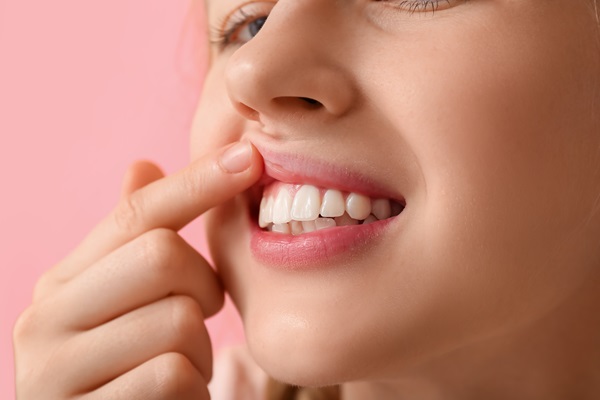Gum Grafting: A Solution for Gum Recession and Tooth Sensitivity

Gum grafting is a treatment option for gum recession and tooth sensitivity that restores the function of the mouth. However, many patients are unaware that it can help relieve their symptoms. Even if their periodontist has already discussed the possibility with them, they often feel uncertain about the invasiveness or recovery following the procedure.
In reality, gum grafting can be an effective option for people whose gums no longer cover the sensitive areas of their teeth, leading to sensitivity and an increased risk of decay. It is smart to understand how gum grafting works before undergoing the procedure.
Understanding gum grafting
A gum graft is typically conducted using tissue taken from elsewhere in the patient’s mouth. However, not everyone is a good candidate for this, and most people who have dedicated themselves to good oral health will not need gum grafting, anyway. Still, genetics and habits are also factors, which is why periodontists regularly perform this procedure in their offices, even on people who brush often.
Who needs gum grafting?
The candidates most suited for gum grafting are those whose gums have receded. The gums are meant to cover the sensitive tooth roots, whose surfaces are prone to decay. However, if they gradually thin over these areas, the roots can become exposed, leading to a discolored smile and sensitivity to cold, heat, and potentially, sugars.
Most gum recession is caused by poor oral hygiene, which leads to gum disease. However, genetics can also make certain patients prone to thin and vulnerable gum tissue that recedes naturally.
The gum grafting process
The process of gum grafting is simple, and most patients can go home right away after the treatment is complete. The periodontist will take soft tissue from elsewhere in the patient’s body, usually somewhere else in the mouth, such as healthy gum tissue on a different arch or from the roof of the mouth. Then, they will use stitches to attach this healthy tissue to the areas that need more gum support.
Once the graft is in place, patients will need to wait for it to fuse with the existing gums. The sutures may come out on their own, or the periodontist may remove them in a separate appointment.
Recovery after gum grafting
The first few days after a gum graft are the most sensitive, and patients should work hard not to disturb the area where the graft was placed. A soft food diet is essential during this time; soft scrambled eggs, ice cream, cottage cheese, smoothies, and soups (not too hot!) are all good choices. Most patients fully recover by the second week's end and return to their normal oral health habits. Hold off on hard or scratchy food (like crackers and popcorn) until about a month after the procedure, when the periodontist says that it is safe.
Patients must avoid brushing or flossing the area around the graft until their periodontist gives the all-clear. Otherwise, they could damage the vulnerable new tissue, resulting in a graft that is not as effective as intended. Remember, this new tissue needs to establish a bond and blood supply with existing gum tissue. Causing it stress and trauma will disrupt this process.
Is gum grafting permanent?
Once a gum graft is in place, it should function as normal living tissue indefinitely. However, if a person has existing circumstances, such as gum disease, that caused the recession in the first place, this issue will need to be addressed to prevent a reoccurrence. Otherwise, the gums may begin to recede again, and another gum graft may be necessary.
If a person does not address their oral health or if their genetics predispose them to significant gum recession, they may need another gum graft in the future. Still, a graft can last for decades under the right circumstances.
Treat gum recession and sensitivity with gum grafting
Gum recession can lead to uncomfortable oral symptoms like sensitivity to temperatures and certain foods. Patients may also feel self-conscious about the size of their teeth once the gums have receded. Our team can help you explore the possibilities of gum grafting and learn about what you can expect, from the grafting process itself to recovery afterward. Contact our office to schedule an appointment to discuss a gum graft and other potential treatments for your sensitivity and gum recession.
Request an appointment here: https://www.charlesdyeriv.com or call Charles E. Dyer IV, DDS, MS, PC at (281) 213-0900 for an appointment in our Cypress office.
Check out what others are saying about our services on Yelp: Gum Grafting in Cypress, TX.
Related Posts
Most people think that deep dental cleaning involves brushing and flossing their teeth every day. Some are probably putting whitening solutions on the teeth too. This is not what you call deep cleaning. A periodontist does the procedure because it involves cleaning below the gumline and down to your roots.But, how is deep dental cleaning…
If you’ve suffered from traumatic tooth loss, then you might be considering dental implants as a solution to restore your smile. However, many folks are concerned about how difficult getting implants installed is and the recovery time involved with the procedure. While dental surgery can seem scary, the technology used to install implants has come…
Bone grafting is a treatment for individuals whose jawbones have deteriorated or been damaged by injury, disease, or health conditions. Bone grafting restores the form and function of the jawbone. It essentially sets the stage for various dental procedures that are important for one’s oral health. A strong jawbone makes talking and chewing a lot…
We all want to maintain our oral health and our smile, and for some of us, this may include having to undergo a procedure known as a gum graft. If you’ve never heard of a gum graft before, that’s ok; they aren’t as common as other routine dental procedures. A graft can be done for…
